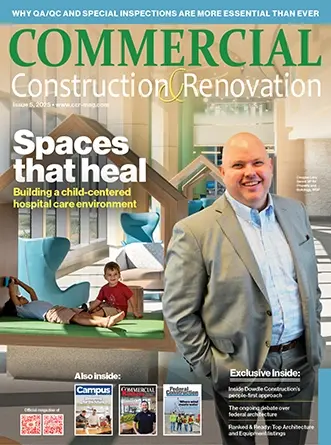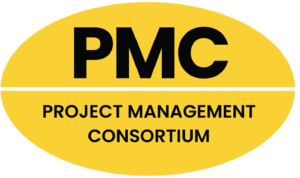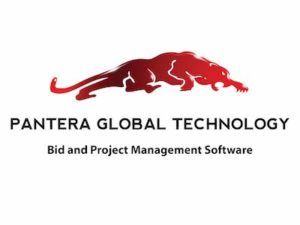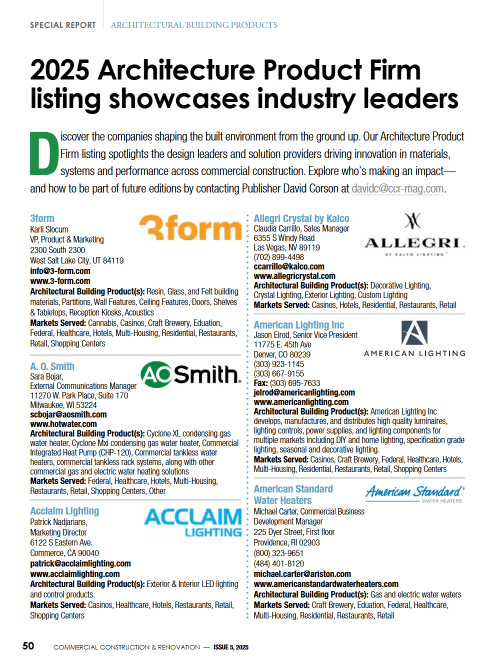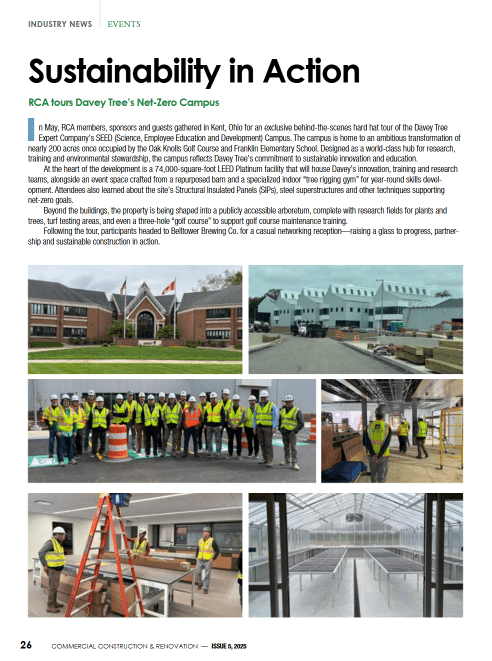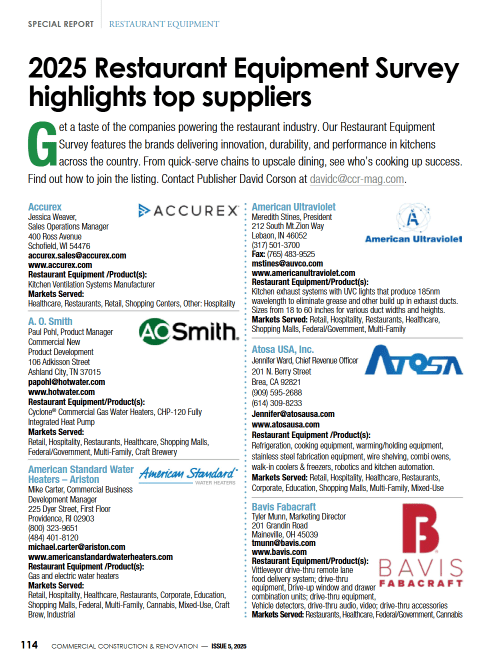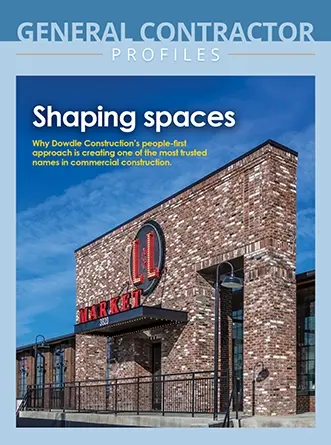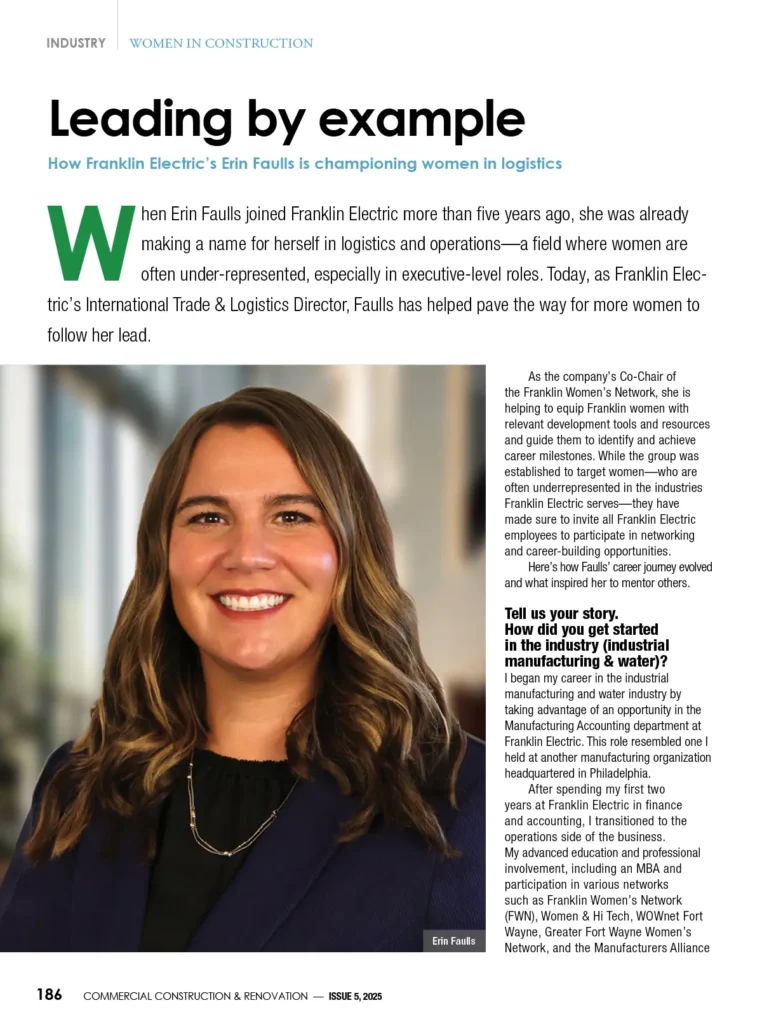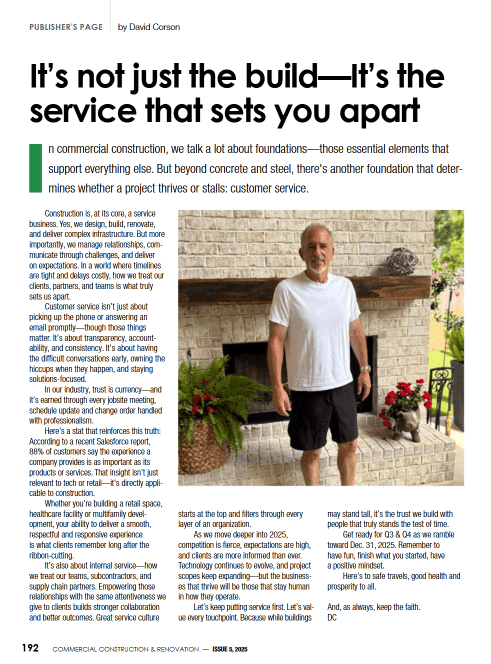The industry is flush with ongoing conversations about building infrastructure and sustainability. Most of the discussion has centered around new techniques for managing material costs, reducing construction waste, and creating energy efficiencies.
But the dialog seems light on what could be the most influential new practices to ensure longer-term sustainability of our infrastructure.
It’s time to advance the conversation. Developing sustainable buildings requires a lot more than just pre-fabricating materials off-site, reducing material usage and recycling waste.
These are all vital practices companies can and should be deploying today, but we must think about what else we can do during construction that will help bring about systemic change to conserve resources and save money in the ongoing operations and maintenance of infrastructure.
Take, for example, BIM adoption. Dodge Analytics recently reported that Contractors saw the highest rate of adoption for BIM in the past three years, driven by the increasing value of BIM data for coordination, take-off, scheduling and prefabrication.
But why are so few talking about the value of BIM data for the ongoing maintenance and management of the building? Sustainability needs to be seen through the lens of using BIM data to predict maintenance, isolate areas of repair and ultimately require less money and resources to operate.
Start with creating a digital twin.
Making better use of technology that is already empowering BIM in construction is one step companies can take now as they plot a path of sustainability.
As contractors build, they should create the foundation of a digital twin of their projects by digitalizing every stage of the project’s progression. This twin can serve as a real-time model and time capsule to help future teams operate or rework a structure much more efficiently and sustainably.
One of the most practical ways to create the foundation of a digital twin is to incorporate sensors that can help monitor construction progress while capturing 3D imagery or 3D point clouds that can be tagged and stored in the BIM model.
This data is extremely valuable in helping project managers more efficiently manage projects in real-time, but it’s even more valuable if the BIM design is updated with the final digital as-built and handed over to the asset owner.
Consider a real-life example of upgrading a building decades after its completion.
Traditionally, it might require crews to go in and start demolishing areas of the building just to see what is behind the walls, below floors or above ceilings. However, if owners can give the architectural team an up-to-date digital twin of the existing asset, they don’t need to guess what obstacles they might face or build a plan from scratch.
Instead, future workers can access the digital twin to understand existing conditions and make informed targeted upgrades and decisions that ultimately accelerate their ability to design a retrofit.
Owners can also use digital twin data to develop preventative maintenance schedules, tracking where materials come from, when they were installed and how they were maintained over the years.
Use AI to improve operations.
Taking it a step further, facility managers can begin using AI for predictive maintenance, identifying potential problems long before they arise. By using AI, facility managers can use the data gathered from sensors to create a predictive maintenance plan based on real-time intelligence.
AI can predict the best time to maintain and what aspect of the structure needs the most attention. In doing so, organizations will see better value in the long run — both in actual cost-savings and reduced energy required for operations.
It’s not about trying to save money by reducing or deferring maintenance. It’s about reducing how much is spent on unnecessary tasks related to maintenance. It’s also about ensuring that the maintenance schedule itself is structured or phased correctly.
The added benefit of this approach is helping to make buildings last longer. After all, the biggest piece of the sustainability puzzle is eliminating the need to tear down old construction and replace it with new builds.
How do we quantify the ROI of technology investments for sustainability?
Perhaps the most obvious benefit is that technology lets architects use BIM to develop more sustainable designs, increase resiliency, reduce carbon emissions, and prolong the life of the building.
But when it comes to long-term sustainability, it’s not just about realizing technology investment savings today. The biggest savings will come with future operations and maintenance.
This shouldn’t be too difficult to quantify as owners already model costs for the life of the building during the planning/design phase.
Owners need to think about applying cost-saving variables, driven by predictive maintenance and lower cost of a retrofit, in their development plans. And start requiring contractors to demonstrate how technology will be used to power BIM and digital twin as-builts.
We must use technology to gather the most relevant information needed to help maintain the building throughout its lifespan. Doing so will allow companies to reduce the amount of time and money it takes in the long run.
So often, the obstacles we face have easy-to-use and practical solutions. Sustainability is perhaps the greatest example. So, why don’t we take steps to advance the conversation and solve it for real?
Michael James is Director of Building Construction Solutions with Leica Geosystems, part of Hexagon. In this role, Michael is responsible for assembling the hardware and software solutions that help customers increase efficiency, reduce rework and improve collaboration. With more than 17 years of experience in honing digital construction workflows, Michael’s experience ranges from office to field, with an acute focus on mechanical, electrical and plumbing (MEP) and coordination across all trades including complex projects such as hospitals and process plants.

